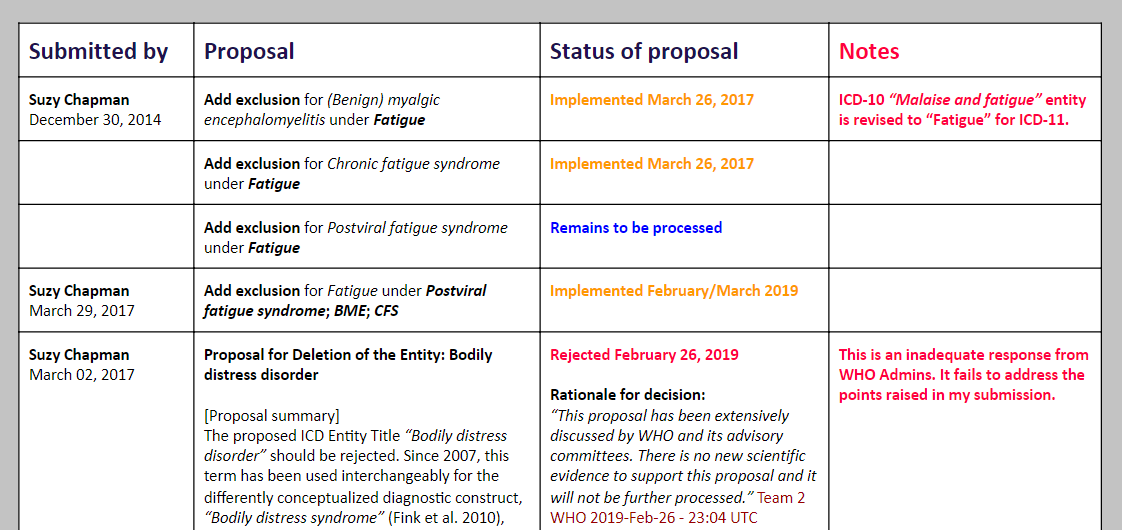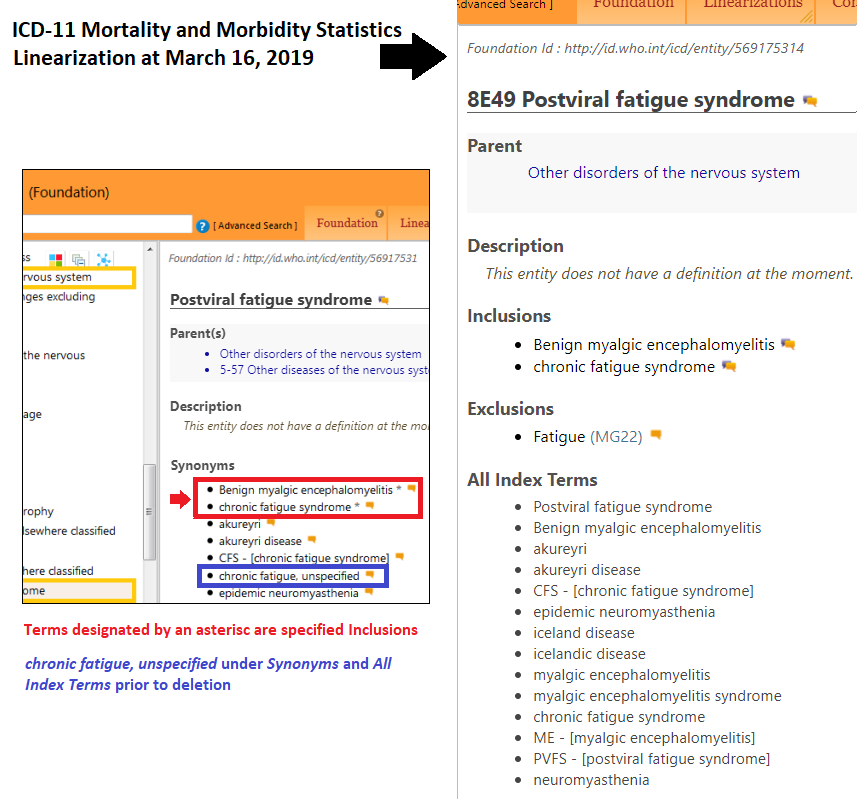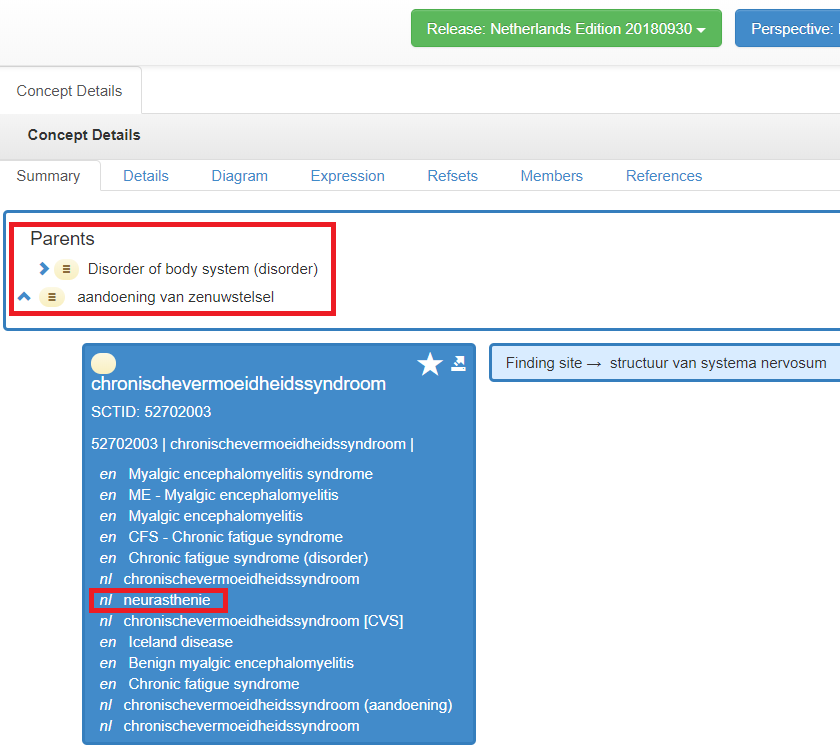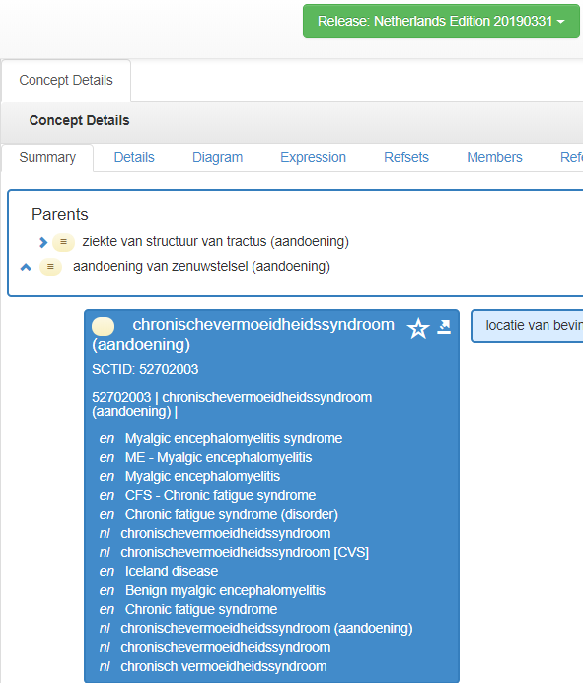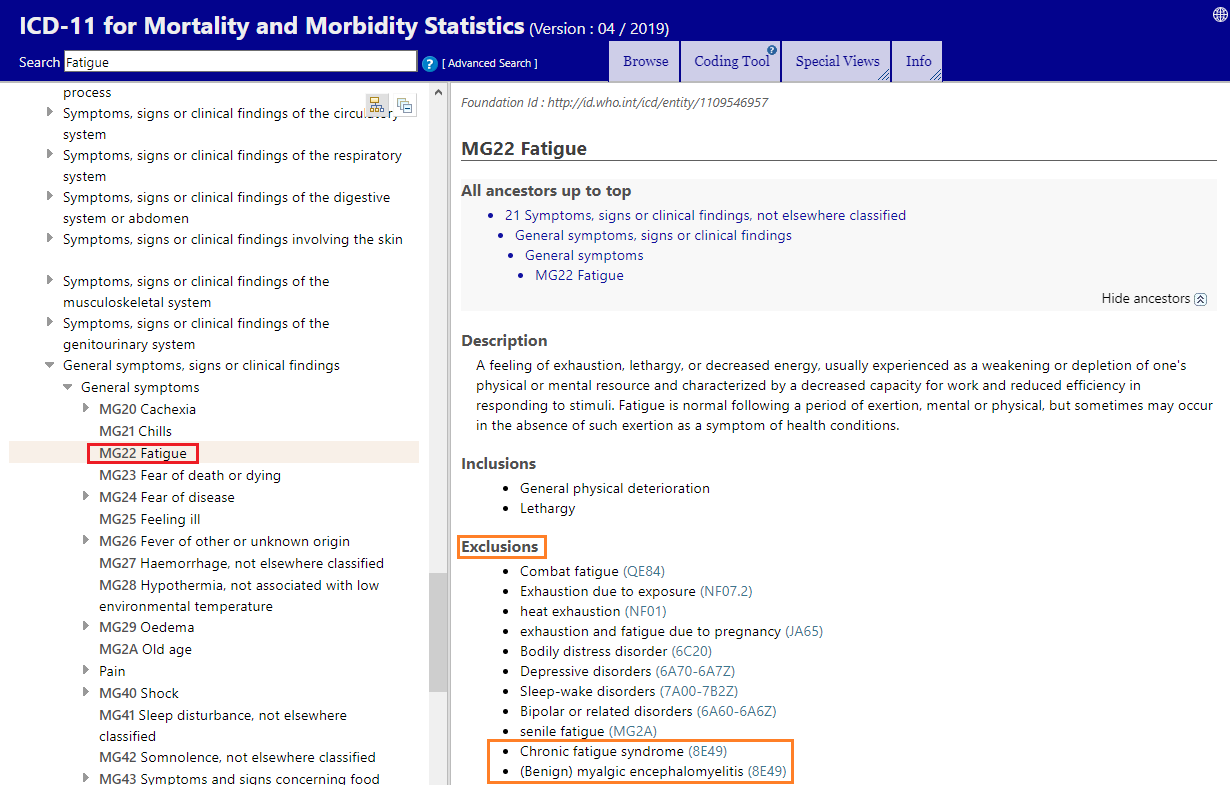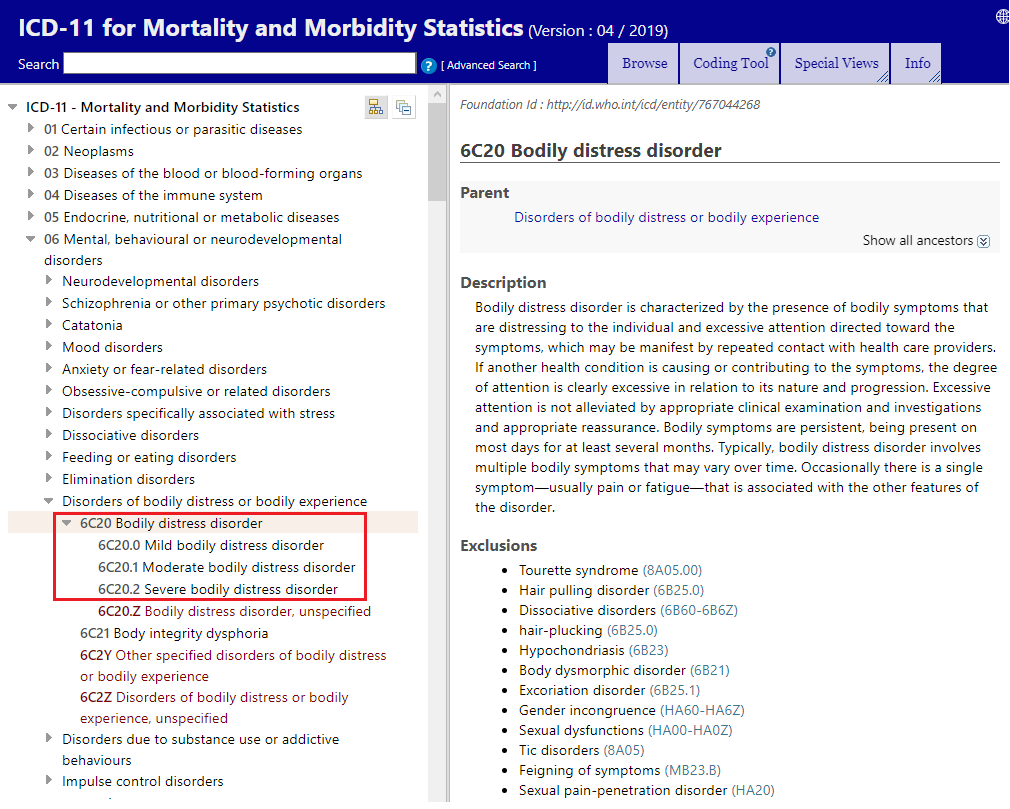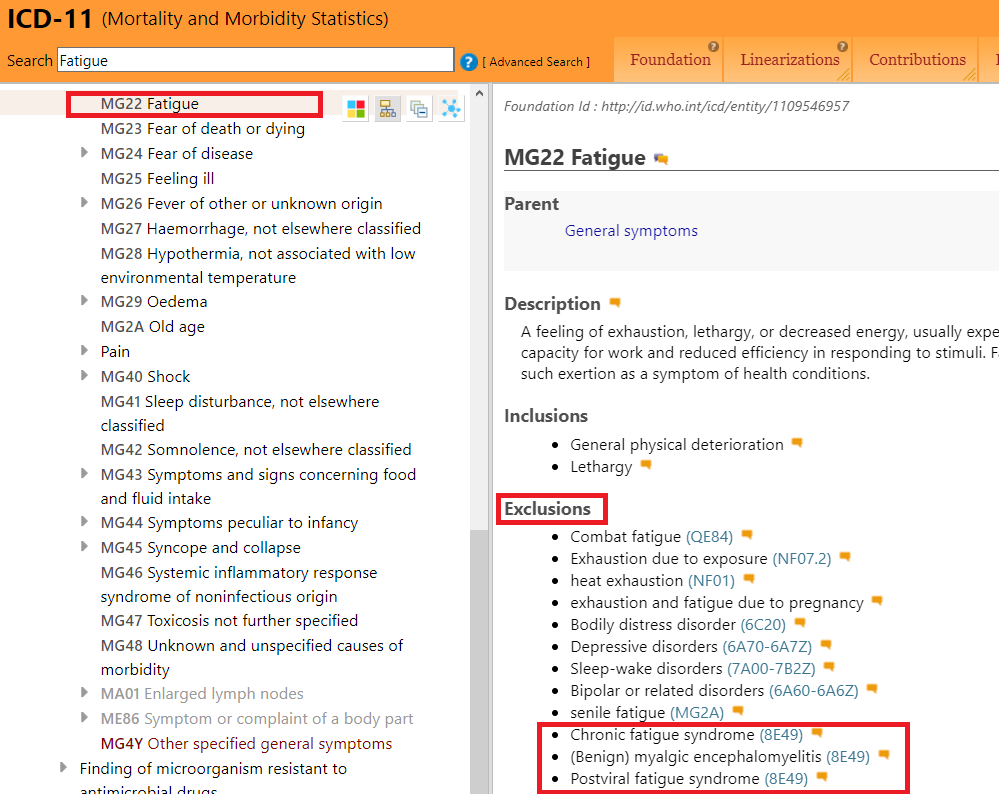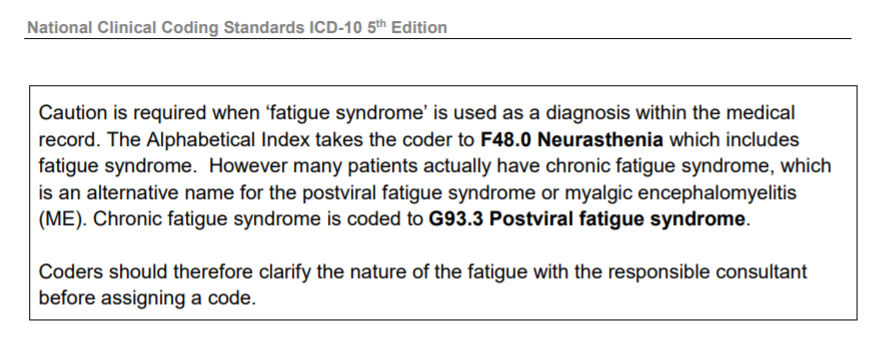A batch of recently processed ICD-11 proposals
If you've been following this thread, you'll be aware that the WHO released a frozen version of
ICD-11 for Mortality and Morbidity Statistics (ICD-11 MMS) in June 2018 to enable member states to start preparations for evaluation, translations and implementation.
A slightly revised release was posted in December 2018. This
Blue "preparation version" does not show all the content that the
Orange Maintenance Platform displays.
The current schedule is for a report to be presented by the WHO Executive Board recommending that WHA approve this preparation release at this year's
World Health Assembly, in May. If endorsed, WHA endorsement won't come into effect until
January 01, 2022.
After that date, member states can start reporting data using the ICD-11 - if their countries have prepared for transition and have implemented the new edition. But it's anticipated that even early implementers will require around 5 years to prepare their health systems for migration to ICD-11. For a period of time, data will be collected using both ICD-10 and ICD-11 and there is no mandatory date by which member states must transition to the new edition.
Once WHA has approved the ICD-11 MMS, it will be subject to an annual update and revision process (the responsibility of the ICD-11 CSAC Committee which takes over from the ICD-10 URC). Minor changes to content can be considered for incorporation on an annual basis. Changes that would affect the code structure would be considered for incorporation on a 5 yearly update cycle.
[See
ICD-11 Reference Guide: 3.8 Annex: ICD-11 Updating and Maintenance for information on the ICD-11 update and revision cycle.]
The numerous
Topic Advisory Groups (TAGs) and sub working groups have disbanded and the
ICD-11 Joint Task Force has been sunsetted.
WHO, the MSAC and CSAC Committees still have a considerable backlog of proposals to process in addition to new proposals that continue to be submitted. The Proposal Mechanism platform will remain online and open for new Comments and Proposals.
The proposal submitted by the WHO's Dr Tarun Dua in November 2017 to delete PVFS from the
Diseases of the nervous system chapter and relocate ME and CFS to the
Symptoms, signs chapter as child categories of
Symptoms, signs or clinical findings of the musculoskeletal system was processed and rightly rejected by the WHO, in November 2018. This decision was supported by the MSAC and CSAC Committees.
During February and March, this year, a number of unprocessed proposals for ICD-11 have been processed.
These include proposals for
6C20 Bodily distress disorder and
8E49 Postviral fatigue syndrome. Some of these proposals date back to 2014. Proposals that had met the March 30, 2017 submission deadline were supposed to be processed before the end of 2017 for consideration for inclusion in the initial release of the ICD-11 MMS. But many of these weren't; and proposals relating to
Postviral fatigue syndrome were in any case held back while an evidence review was undertaken.
These recently processed proposals include proposals that had been submitted by
Suzy Chapman since 2014; by
Suzy Chapman and Mary Dimmock; and by
Lily Chu on behalf of the IACFS/ME.
ICD-11 Proposal Mechanism, status of processed proposals at 10.03.19
In order to access the ICD-11 Proposal Mechanism, registration with the platform is required and the platform is clunky to navigate.
For ease of access, I have made a table which sets out the status of these recently processed proposals plus the Dr Dua proposal.
Here's a preview in the screenshot. The PDF of the full table can be downloaded here:
https://dxrevisionwatch.files.wordpress.com/2019/03/status-of-icd-11-processed-proposals-v1.pdf
or
http://bit.ly/ICD11ProposalTable
I've also attached a copy of the PDF to this post.
Extract:
Open the full Table here
As you will see, despite making such a song and dance about a protracted evidence review and encouraging stakeholders to make use of the Proposal Mechanism and Comment facilities, the WHO classification experts and WHO Proposal Mechanism Admins haven't exactly taken much trouble with their rationales for rejections. And yes, I am disappointed, of course, with these outcomes, but I would not leave this bunch in charge of a whelk stall.

